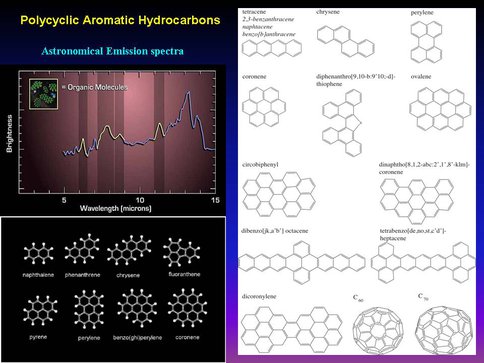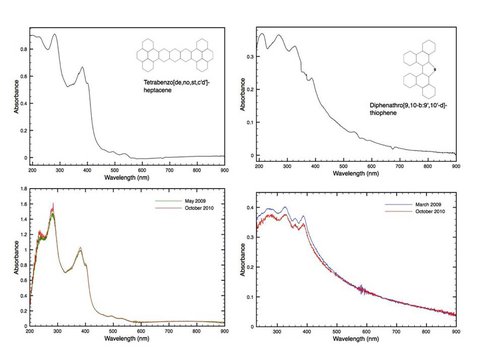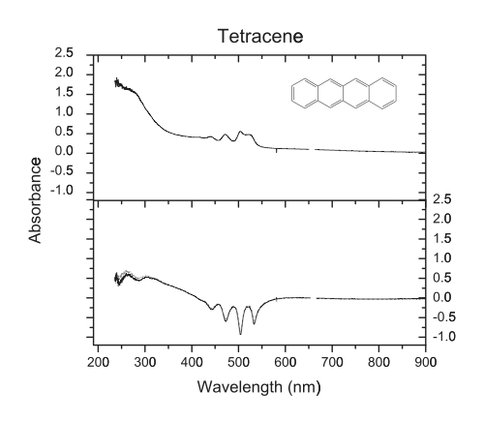2011 Annual Science Report
 University of Wisconsin
Reporting | SEP 2010 – AUG 2011
University of Wisconsin
Reporting | SEP 2010 – AUG 2011
Project 2E: The ORGANIC Experiment on EXPOSE-R - Space Exposure on the International Space Station (ISS)
Project Summary
In March of 2009, the Organic experiment integrated into the European multi-user facility EXPOSE-R, containing experiments dedicated to Astrobiology, was mounted through Extra Vehicular Activity (EVA) externally on the International Space Station (ISS). The experiment exposed organic samples of astronomical interest for a duration of 97 weeks (~22 months) to the space environment. The samples that were returned to Earth in spring 2011, received a total UV radiation dose during their exposure including direct solar irradiation of >2500h (>42.1 kJ per sample, based on ASTM E-490 AM0 standard solar spectrum between 119 and 400 nm), exceeding the limits of laboratory simulations. The Organics experiment on EXPOSE-R consists of thin films of polycyclic aromatic hydrocarbons (PAHs) and fullerenes that were exposed to solar UV under vacuum or controlled atmosphere. Samples were deposited in thin (~few hundred nm) films by sublimation on MgF2 windows inside the sample cell. Dark samples are shielded from the UV photons and enable us to discriminate between the effects of exposure to photons and cosmic rays. The corresponding time-dependent ground-control for the Organic experiment measured over ~19 months is presented and preliminary data of returned flight samples are shown.
Project Progress
The Organic experiment monitored the chemical evolution, survival, destruction and chemical modification of polycyclic aromatic hydrocarbons (PAHs), fullerenes and macromolecules in space environment. PAHs are highly abundant and ubiquitous compounds in the interstellar medium. The spontaneous formation and stability of fullerene compounds have suggested their existence in space in relation to carbon dust.
Fullerenes C60 and C70 have recently been confirmed in the hydrogen-poor planetary nebula Tc-1 and recently also in other sources. Monitoring the behavior of these molecules upon space exposure will allow us to determine constraints on the photochemistry of these compounds in the interstellar medium. Since PAHs and probably fullerenes are also present in meteorites, the obtained data are also relevant for the reconstruction of events in the early Solar System. Among the exposed species are C60, C70, coronene (C24H12), ovalene (C32H14), dicoronylene (C48H20), etc., see Figure 1.
The samples were analyzed before exposure to space environment with UV, visible and infrared spectroscopy. During the 2-year exposure time ground control carriers were monitored regularly by UV-Vis spectroscopy using an Ocean Optics HR4000 spectrometer with a fiber optic interface. Transmission/absorption spectra were recorded by Dr. K. Bryson every 3-4 months. The measurements confirm that no alterations have occurred in the spectra of the ground sample carriers, see Figure 2.
EXPOSE-R was retrieved by EVA in January 2011, see Figure 3. During the exposure of the EXPOSE-R facility on the ISS, two control sample carriers were exposed to simulated solar irradiation, with a slight time shift relative to the ISS exposure, in a planetary simulation chamber at the Microgravity User Support Center (MUSC) at DLR (Deutsches Zentrum für Luft- und Raumfahrt). Vacuum, UV radiation, and temperature fluctuations were simulated according to the telemetry data measured during flight until September 2011. Upon return to Earth the flight trays underwent a period of inspection before being distributed to research laboratories. Very preliminary data are shown in Figure 4 that show degradation of the thin film of tetracene. In the near future we will perform spectroscopic and analytical measurements of samples from all carriers (flight, ground dark control, and the simulated ground control) and provide a comprehensive analysis of ground and spaced-based data.
References
K.L. Bryson, Z. Peeters, F. Salama, B.H. Foing, P. Ehrenfreund, A.J. Ricco, W. Schmidt, M. Breitfellner, E. Jessberger, A. Bischoff, F. Robert (2011) “The ORGANIC Experiment on EXPOSE-R“, Advances in Space Research, 48(12), 1980-1996.
Figure 1. Left: Examples of well known PAHs and their astronomical emission spectrum. Right: Organic compounds selected for the Organic experiment on the EXPOSE-R facility.
Figure 2. Top: UV-Vis spectrum of a) tetrabenzo[de,no,st,c’d’]heptacene and b) diphenanthro[9,10-b:9’,10’-d]thiophene films deposited on a MgF2 disk before sealing inside the cell in the flight sample carrier. Bottom: The graph displays the initial and most recent dark ground control UV-Vis spectra monitoring of both films deposited on a MgF2 disk inside one of the ground sample carriers.
Figure 3. EXPOSE-R retrieved by EVA in January 2011. The yellow box depicts the Organic experiment. The fluorescent color of PAH and fullerenes witnesses that degradation has not destroyed the entire sample.
Figure 4. Preliminary data of tetracene from a controlled atmosphere cell. Top: depicts the spectra of the film exposed to solar UV photons. Bottom: depicts the residual spectra obtained by subtraction. The solid line shows the residual spectrum after subtraction of the spectra of the dark control (sample exposed to cosmic rays on EXPOSE-R but shielded from solar UV) from the spectrum of the UV- exposed sample. The dashed line grey shows the residual spectrum after subtraction of the control experiment (that was not exposed to space conditions) from the solar UV exposed sample.
Publications
-
Ansdell, M., Ehrenfreund, P., & McKay, C. (2011). Stepping stones toward global space exploration. Acta Astronautica, 68(11-12), 2098–2113. doi:10.1016/j.actaastro.2010.10.025
-
Bramall, N. E., Quinn, R., Mattioda, A., Bryson, K., Chittenden, J. D., Cook, A., … Hoffmann, S. V. (2012). The development of the Space Environment Viability of Organics (SEVO) experiment aboard the Organism/Organic Exposure to Orbital Stresses (O/OREOS) satellite. Planetary and Space Science, 60(1), 121–130. doi:10.1016/j.pss.2011.06.014
-
Bryson, K. L., Peeters, Z., Salama, F., Foing, B., Ehrenfreund, P., Ricco, A. J., … Robert, F. (2011). The ORGANIC experiment on EXPOSE-R on the ISS: Flight sample preparation and ground control spectroscopy. Advances in Space Research, 48(12), 1980–1996. doi:10.1016/j.asr.2011.07.017
-
Cox, N. L. J., Ehrenfreund, P., Foing, B. H., D’Hendecourt, L., Salama, F., & Sarre, P. J. (2011). Linear and circular spectropolarimetry of diffuse interstellar bands. A&A, 531, A25. doi:10.1051/0004-6361/201016365
-
Direito, S. O. L., Ehrenfreund, P., Marees, A., Staats, M., Foing, B., & Röling, W. F. M. (2011). A wide variety of putative extremophiles and large beta-diversity at the Mars Desert Research Station (Utah). International Journal of Astrobiology, 10(03), 191–207. doi:10.1017/s1473550411000012
-
Ehrenfreund, P. (2011). A Multiple-Choice Essay. Astrobiology, 11(8), 737–741. doi:10.1089/ast.2011.0697
-
Ehrenfreund, P., & Foing, B. H. (2010). Fullerenes and Cosmic Carbon. Science, 329(5996), 1159–1160. doi:10.1126/science.1194855
-
Ehrenfreund, P., McKay, C., Rummel, J. D., Foing, B. H., Neal, C. R., Masson-Zwaan, T., … Race, M. (2012). Toward a global space exploration program: A stepping stone approach. Advances in Space Research, 49(1), 2–48. doi:10.1016/j.asr.2011.09.014
-
Ehrenfreund, P., Röling, W. F. M., Thiel, C. S., Quinn, R., Sephton, M. A., Stoker, C., … Foing, B. H. (2011). Astrobiology and habitability studies in preparation for future Mars missions: trends from investigating minerals, organics and biota. International Journal of Astrobiology, 10(03), 239–253. doi:10.1017/s1473550411000140
-
Foing, B. H., Stoker, C., Zavaleta, J., Ehrenfreund, P., Thiel, C., Sarrazin, P., … Davies, G. R. (2011). Field astrobiology research in Moon–Mars analogue environments: instruments and methods. International Journal of Astrobiology, 10(03), 141–160. doi:10.1017/s1473550411000036
-
Halasinski, T. M., Ruiterkamp, R., Salama, F., Foing, B. H., & Ehrenfreund, P. (2011). C 84 : A Prototype of Larger Fullerenes. Laboratory Spectroscopy and Astronomical Relevance. Fullerenes, Nanotubes and Carbon Nanostructures, 19(5), 398–409. doi:10.1080/15363831003721807
-
Kotler, J. M., Quinn, R. C., Foing, B. H., Martins, Z., & Ehrenfreund, P. (2011). Analysis of mineral matrices of planetary soil analogues from the Utah Desert. International Journal of Astrobiology, 10(03), 221–229. doi:10.1017/s1473550411000103
-
Martins, Z., Sephton, M. A., Foing, B. H., & Ehrenfreund, P. (2011). Extraction of amino acids from soils close to the Mars Desert Research Station (MDRS), Utah. International Journal of Astrobiology, 10(03), 231–238. doi:10.1017/s1473550410000431
-
Nicholson, W. L., Ricco, A. J., Agasid, E., Beasley, C., Diaz-Aguado, M., Ehrenfreund, P., … Young, A. (2011). The O/OREOS Mission: First Science Data from the Space Environment Survivability of Living Organisms (SESLO) Payload. Astrobiology, 11(10), 951–958. doi:10.1089/ast.2011.0714
-
Orzechowska, G. E., Kidd, R. D., Foing, B. H., Kanik, I., Stoker, C., & Ehrenfreund, P. (2011). Analysis of Mars analogue soil samples using solid-phase microextraction, organic solvent extraction and gas chromatography/mass spectrometry. International Journal of Astrobiology, 10(03), 209–219. doi:10.1017/s1473550410000443
-
Peeters, Z., Vos, D., Ten Kate, I. L., Selch, F., Van Sluis, C. A., Sorokin, D. Y., … Ehrenfreund, P. (2010). Survival and death of the haloarchaeon Natronorubrum strain HG-1 in a simulated martian environment. Advances in Space Research, 46(9), 1149–1155. doi:10.1016/j.asr.2010.05.025
-
Thiel, C. S., Ehrenfreund, P., Foing, B., Pletser, V., & Ullrich, O. (2011). PCR-based analysis of microbial communities during the EuroGeoMars campaign at Mars Desert Research Station, Utah. International Journal of Astrobiology, 10(03), 177–190. doi:10.1017/s1473550411000073
-
Vos, D. A. I., Cox, N. L. J., Kaper, L., Spaans, M., & Ehrenfreund, P. (2011). Diffuse interstellar bands in Upper Scorpius: probing variations in the DIB spectrum due to changing environmental conditions. A&A, 533, A129. doi:10.1051/0004-6361/200809746
-
Woellert, K., Ehrenfreund, P., Ricco, A. J., & Hertzfeld, H. (2011). Cubesats: Cost-effective science and technology platforms for emerging and developing nations. Advances in Space Research, 47(4), 663–684. doi:10.1016/j.asr.2010.10.009
- Bryson, K.L., Peeters, Z., Salama, F., Foing, B.H., Ehrenfreund, P., Ricco, A.J., Breitfellner, M., Jessberger, E., Bischoff, A. & Robert, F. (2011, In Press). Ground Control Monitoring for the Organics Experiment on the EXPOSE-R Facility on the International Space Station. NASA Laboratory Astrophysics Workshop,.
- Ehrenfreund, P. & Westall, F. (2011, In Press). Astrobiology experiments in Low Earth Orbit [Book Chapter]. Laboratory Science with Space Data, ULISSE Book. Springer Verlag.
- Ehrenfreund, P., Ricco, A.J., Quinn, R., Bramall, Bryson, K., Chittenden, J., Cook, A., Mancinelli, R., Mattioda, A., Minelli, G., Nicholson, W., Santos, O., Squires, D., Kitts, C., Rasay, R., Young, A. & Ames, O-S. (2011). The O/OREOS mission – Astrobiology data collected in low Earth orbit. 42nd Lunar and Planetary Science Conference.
- Ehrenfreund, P., Ricco, A.J., Quinn, R., Bramall, N., Bryson, K., Chittenden, J., Cook, A., Mancinelli, R., Mattioda, A., Minelli, G., Nicholson, W., Santos, O., Squires, D., Friedericks, C., Kitts, C., Rasay, R. & Ames, O-S. (2011). O/OREOS: A successful mission of NASA’s Astrobiology Small Payload Program. 62nd International Astronautical Congress. Cape Town, SA.
- Ehrenfreund, P., Röling, W.F.M., Thiel, C.S., Quinn, R., Sephton, M.A., Stoker, C., Kotler, M., Direito, S.O.L., Martins, Z., Orzechowska, G.E., Kidd, R.D. & Foing, B.H. (2011). Habitability studies in preparation for future Mars missions. 62nd International Astronautical Congress. Cape Town, SA.
- Ehrenfreund, P., Spaans, M. & Holm, N. (2011). The evolution of organic matter in space, Philosophical Transactions A: Royal Society Meeting The detection of extraterrestrial life and the consequences for science and society. Phil. Trans. R. Soc, A 2011(369): 538-554.
- Foing, B.H., Thiel, C., Direito, S., Ehrenfreund, P., Rolin, W., Martins, Z., Sephton, M., Stoker, C., Zhavaleta, J., Orzechowska, G., Kidd, R., Quinn, R., Kotler, M. & Team, I.E.2. (2011). Astrobiology and habitability studies supporting Mars research and missions. 42nd Lunar and Planetary Science Conference.
- Kitts, C., Rasay, R., Bica, L., Mas, I., Neumann, M., A.Young, Minelli, G., Ricco, A., Stackpole, E., Agasid, E., Beasley, C., Friedericks, C., Squires, D., Ehrenfreund, P., Nicholson, W., Mancinelli, R., Santos, O., Quinn, R., Bramall, N., Mattioda, A., A.Cook, Chittenden, J., Bryson, K., Piccini, M. & Parra, M. (2011). Initial On-Orbit Engineering Results from the O/OREOS Nanosatellite. 25th Annual AIAA/USU Conference on Small Satellites.
- Minelli, G., Ricco, A.J., Beasley, C., Hines, J., Agasid, E., Yost, B., Squires, D., Friedericks, C., Piccini, M., Defou, G., McIntyre, M., Ricks, R., Parra, M., Diaz-Aguado, M., Timucin, L., Henschke, M., Lera, M., Tan, M., Cohen, M., Ronzano, K., Luzzi, E., Mai, N., Schooley, A., Ly, D., Stackpole, E., Lin, J., Tucker, J., Ehrenfreund, P., Mancinelli, R., Mattioda, A., Nicholson, W., Quinn, R., Santos, O., Bramall, N., Bryson, K., Chittenden, J., Taylor, C., Cook, A. & Landis, D. (2010). O/OREOS Nanosatellite: A Multi-Payload Technology Demonstration. 24th Annual AIAA/USU Conference on Small Satellites. Logan, Utah.
- Report, C. (2011). International Earth-based research program as a stepping stone for global space exploration. COSPAR. Paris.
- Rummel, J.D. & Ehrenfreund, P. (2011). Extending the Outer Space Treaty to Protect Planetary Environments. 62nd International Astronautical Congress. Cape Town, SA.
- Thiel, C., Ehrenfreund, P., Pletser, V., Foing, B.H. & Ullrich, O. (2011). Analysis of microbial diversity by PCR in a Mars analogue environment – the Mars Desert Research Station. 62nd International Astronautical Congress. Cape Town, SA.
- Walter, N., Smith, T., Worms, J.C., Rummel, J., McKay, C. & Ehrenfreund, P. (2011). International Earth-based research and technology program as a stepping stone for global space exploration. 62nd International Astronautical Congress. Cape Town, SA.
-
PROJECT INVESTIGATORS:
-
PROJECT MEMBERS:
Antonio Ricco
Collaborator
Farid Salama
Collaborator
Kathie Bryson
Postdoc
-
RELATED OBJECTIVES:
Objective 3.1
Sources of prebiotic materials and catalysts




